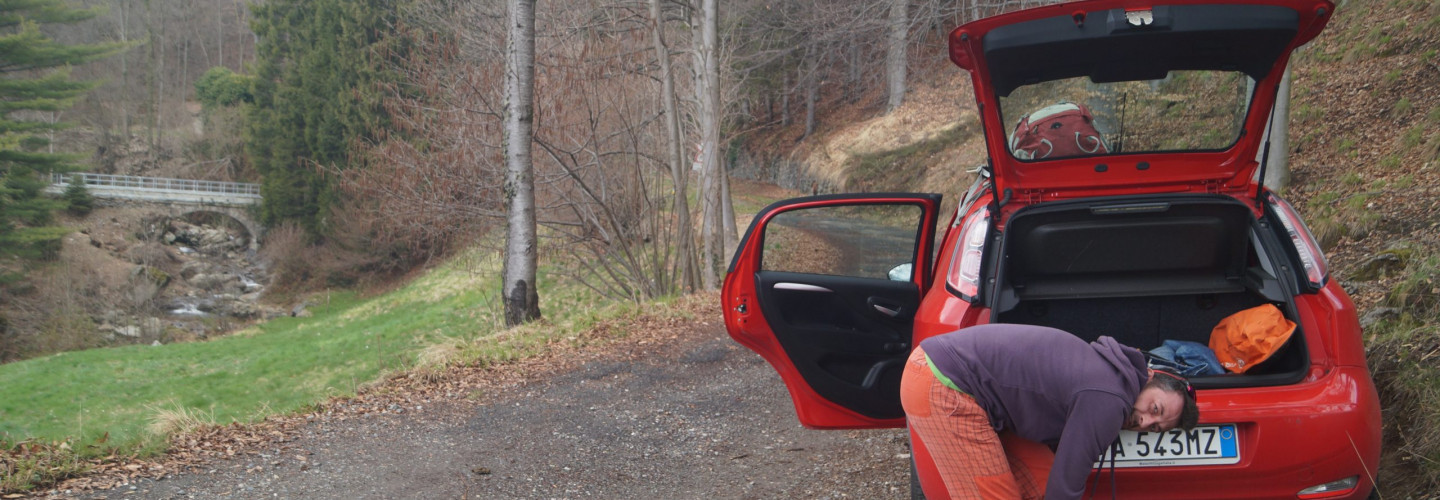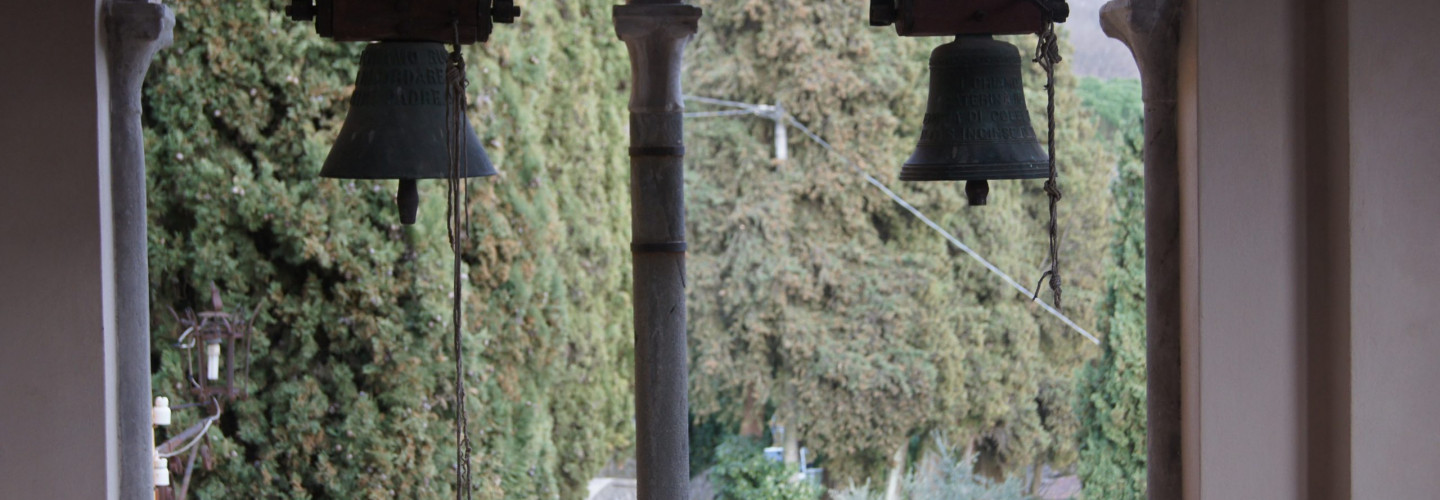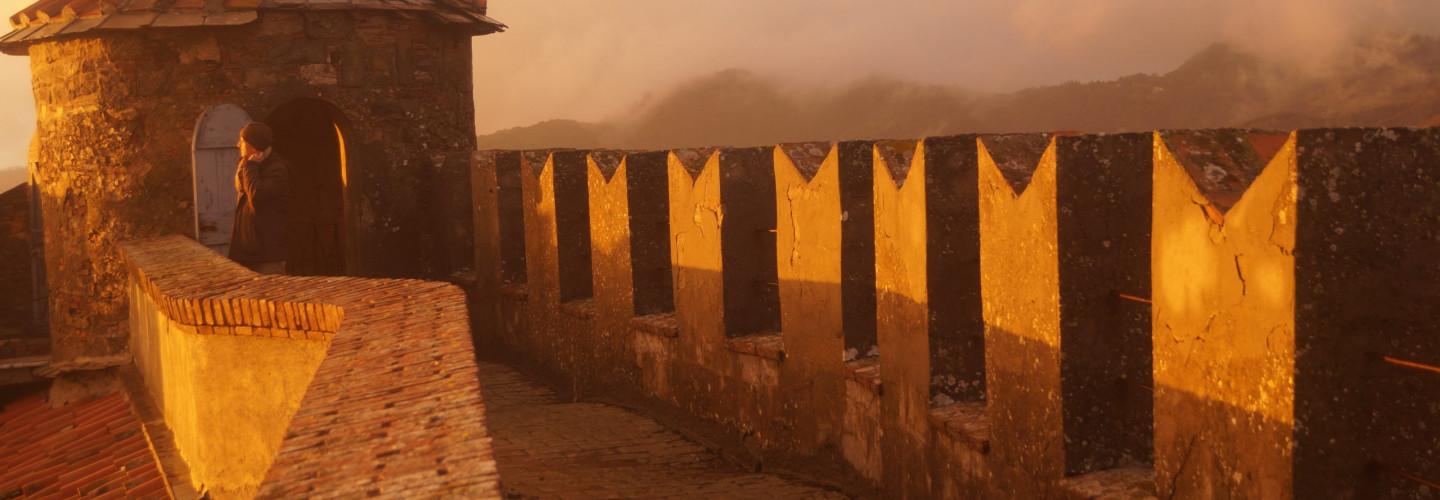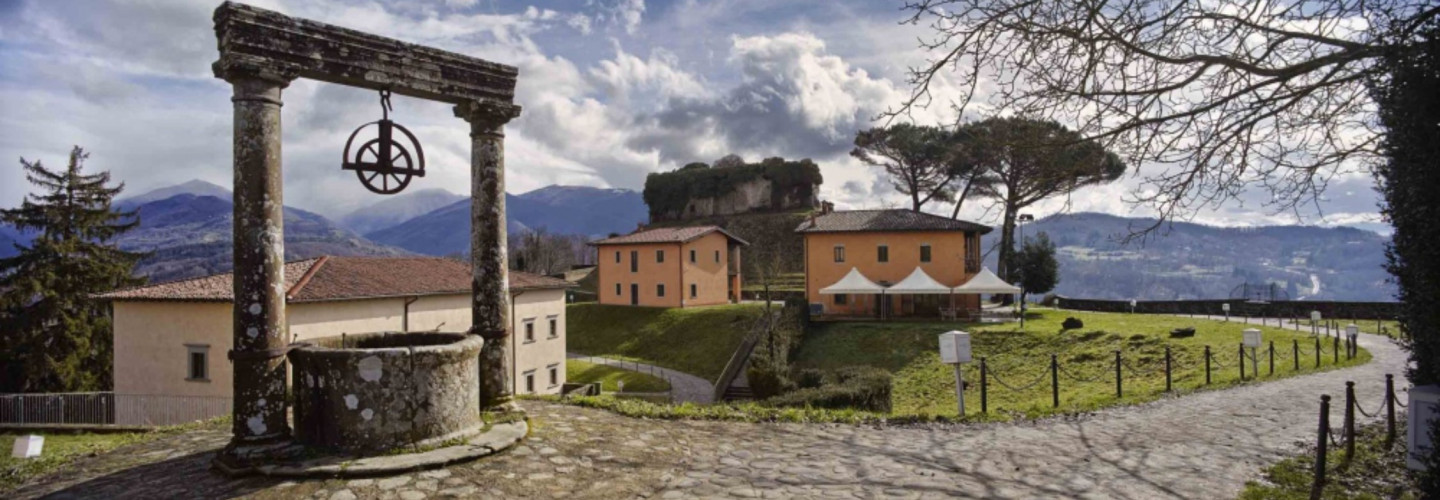
Track details
Distance
79.4km
Duration
22h 15min
Ascent
3151m
Descent
3005m
Starting altitude
353m
Arrival altitude
499m
Lowest point
123m
Highest point
875m
Parking lot Castelnuovo Garfagnana
Free parking at Simply Supermarket, or for a fee for fractions of an hour along Via Vittorio Emanuele or Piazzale Marionetti
Parking lot Castelnuovo Garfagnana

Free parking at Simply Supermarket, or for a fee for fractions of an hour along Via Vittorio Emanuele or Piazzale Marionetti
Verrucole Parking lot
Several parking opportunities. A big parking lot beneath the S.Lorenzo church or else by the church during not crowded days
Verrucole Parking lot

Several parking opportunities. A big parking lot beneath the S.Lorenzo church or else by the church during not crowded days
Fosdinovo parking lot
If you come from Lunigiana, and you travel by car, you can look for an even closer place towards the Castle gates along the road that goes up to the door. Otherwise, leave your car at the camper area, very convenient (there is also a petrol station) and continue on foot towards the entrance to the village, in 3 minutes you will be at the door.
Fosdinovo parking lot

If you come from Lunigiana, and you travel by car, you can look for an even closer place towards the Castle gates along the road that goes up to the door. Otherwise, leave your car at the camper area, very convenient (there is also a petrol station) and continue on foot towards the entrance to the village, in 3 minutes you will be at the door.
Giovanni Pascoli house museum
The country villa of the Cardosi-Carrara family, located in the Caproni di Castelvecchio, near Barga is the accommodation that Giovanni Pascoli chose as his residence in 1895. In this place the poet spent the most peaceful years of his existence, from 1895 to 1912, the year of his death and where works such as Myricae (1903), the First Poems (1897), the Canti di Castelvecchio (1903), the Convivial Poems (1904), or the innovative works of Pascoli’s poetry, came to light.
In the Casa Museo you can discover the furnishings and layout of the spaces identical to those which he had at the time of the poet’s death. After the poet’s death, the building was declared a national monument and the area that includes the house was of particular public interest. The archive holds about 76,000 papers and the library about 12,000 volumes. A visit not to be missed for those who go to Barga.
Among the Canti di Castelvecchio composed in this house there is also the famous lyric “La cavalla storna”.
“G. Pascoli” House Museum
Castelvecchio Pascoli – Barga
Telephone 0583.766147
Opening hours: 1 October – 31 March (Tuesday from 14-17.15 and from Wednesday to Sunday 9.30-13 and 14.30-17.15); April 1 – September 30 (Tuesday 15.30-18.45 and Wednesday to Sunday 10.30-13 and 15-18.45)
Closed every Monday and Tuesday morning.
Giovanni Pascoli house museum

The country villa of the Cardosi-Carrara family, located in the Caproni di Castelvecchio, near Barga is the accommodation that Giovanni Pascoli chose as his residence in 1895. In this place the poet spent the most peaceful years of his existence, from 1895 to 1912, the year of his death and where works such as Myricae (1903), the First Poems (1897), the Canti di Castelvecchio (1903), the Convivial Poems (1904), or the innovative works of Pascoli’s poetry, came to light.
In the Casa Museo you can discover the furnishings and layout of the spaces identical to those which he had at the time of the poet’s death. After the poet’s death, the building was declared a national monument and the area that includes the house was of particular public interest. The archive holds about 76,000 papers and the library about 12,000 volumes. A visit not to be missed for those who go to Barga.
Among the Canti di Castelvecchio composed in this house there is also the famous lyric “La cavalla storna”.
“G. Pascoli” House Museum
Castelvecchio Pascoli – Barga
Telephone 0583.766147
Opening hours: 1 October – 31 March (Tuesday from 14-17.15 and from Wednesday to Sunday 9.30-13 and 14.30-17.15); April 1 – September 30 (Tuesday 15.30-18.45 and Wednesday to Sunday 10.30-13 and 15-18.45)
Closed every Monday and Tuesday morning.
Malaspina Castle of Fosdinovo
With its 12th century walls still intact, Fosdinovo Castle crowning a hill 550 meters high. The castle still dominates a great part of the Thyrrenian coastline. During the Middle Age its position was ideal to maintain control of the Apennines outlet to the sea and the Lunigiana region, with its roads and mountain pass linking the Thyrrenian coast to northern Italy.
One of the coat of arms walled on the main gate walls.
We have records of the existence of Fosdinovo Castle as fief of the Erberia family since the year 1124, under the direct control of Bishop-Counts of Luni. This arrangement continued until 1317, when the unstoppable rise of the marquises Malaspina, strictly connected with the Ghibelline cause, brought the Episcopal power to a rapid decline and the leader of the family Spinetta Malaspina took possession of the castle. Immediately after Fosdinovo was conquered by the great commander Castruccio Castracani, Lord of Lucca, that besieged the castle with 6000 soldiers and 1000 knights. In the 1334, after the decline of Castruccio, the castle returned into possession of the Malaspina .
The front towards the town with one of the powerful round towers.
At the beginning of the 14th century the Malaspina, now masters of the entire Lunigiana thanks to the help of the powerful family of the Scaligeri of Verona and Enrico the 7th, moved the seat of the family from the nearby castle of the Verrucola di Fivizzano to Fosdinovo, and made the village the administrative center of their lands. The castle was enlarged. The original keep of the 12th century was widened and strengthened with turrets and a new cylindrical tower, ghibelline battlements (with ‘tail of swallow’ form), machicolation on the sides towards the Lunigiana and with towers and ramparts on the side facing the village; inside, the castle became one of the finest nobiliary residences of that time, rich of frescoed rooms. The magnificent inner courtyard was a 16th century addition. Over the main gate, defended by a breteche, is still visible a coat of arms representing a dog holding a plant with thorns (known as “Spino”) in its mouth to symbolize the strong alliance between the Malaspina and the Scaligeri. All around, in the walls are opened gun loops for cannons and other fire arms.
The castle has the reputation of ‘indestructible’ and even the earthquake of 1922, that destroyed great part of the Lunigiana, made no serious damage to its structure. A legend says that the great poet Dante Alighieri passed some days at the castle, an event historically impossible. Another legend is connected with the presence in one of the rooms of the castle of the ‘well of oblivion’: the marquise Cristina Adelaide Pallavicino, bride of Ippolito Malaspina, attracted her lovers into this room and then threw them down in this pit full of blades which ended in a water channel beyond the walls. Most likely the trap was used, but for the elimination of enemies! The castle is still owned by the marquises Torrigiani-Malaspina and managed by the cultural association Lo Spino Bianco [ Info from official website: www.castellodifosdinovo.it]
Malaspina Castle of Fosdinovo

With its 12th century walls still intact, Fosdinovo Castle crowning a hill 550 meters high. The castle still dominates a great part of the Thyrrenian coastline. During the Middle Age its position was ideal to maintain control of the Apennines outlet to the sea and the Lunigiana region, with its roads and mountain pass linking the Thyrrenian coast to northern Italy.
One of the coat of arms walled on the main gate walls.
We have records of the existence of Fosdinovo Castle as fief of the Erberia family since the year 1124, under the direct control of Bishop-Counts of Luni. This arrangement continued until 1317, when the unstoppable rise of the marquises Malaspina, strictly connected with the Ghibelline cause, brought the Episcopal power to a rapid decline and the leader of the family Spinetta Malaspina took possession of the castle. Immediately after Fosdinovo was conquered by the great commander Castruccio Castracani, Lord of Lucca, that besieged the castle with 6000 soldiers and 1000 knights. In the 1334, after the decline of Castruccio, the castle returned into possession of the Malaspina .
The front towards the town with one of the powerful round towers.
At the beginning of the 14th century the Malaspina, now masters of the entire Lunigiana thanks to the help of the powerful family of the Scaligeri of Verona and Enrico the 7th, moved the seat of the family from the nearby castle of the Verrucola di Fivizzano to Fosdinovo, and made the village the administrative center of their lands. The castle was enlarged. The original keep of the 12th century was widened and strengthened with turrets and a new cylindrical tower, ghibelline battlements (with ‘tail of swallow’ form), machicolation on the sides towards the Lunigiana and with towers and ramparts on the side facing the village; inside, the castle became one of the finest nobiliary residences of that time, rich of frescoed rooms. The magnificent inner courtyard was a 16th century addition. Over the main gate, defended by a breteche, is still visible a coat of arms representing a dog holding a plant with thorns (known as “Spino”) in its mouth to symbolize the strong alliance between the Malaspina and the Scaligeri. All around, in the walls are opened gun loops for cannons and other fire arms.
The castle has the reputation of ‘indestructible’ and even the earthquake of 1922, that destroyed great part of the Lunigiana, made no serious damage to its structure. A legend says that the great poet Dante Alighieri passed some days at the castle, an event historically impossible. Another legend is connected with the presence in one of the rooms of the castle of the ‘well of oblivion’: the marquise Cristina Adelaide Pallavicino, bride of Ippolito Malaspina, attracted her lovers into this room and then threw them down in this pit full of blades which ended in a water channel beyond the walls. Most likely the trap was used, but for the elimination of enemies! The castle is still owned by the marquises Torrigiani-Malaspina and managed by the cultural association Lo Spino Bianco [ Info from official website: www.castellodifosdinovo.it]
Verrucole fortress
Deep in the Garfagnana, 3 kilometres from the municipality of San Romano, sits the imposing Verrucole Castle. The fortress is a very important medieval site, positioned on a hill 600 metres up, above the village of Verrucole.
Built by the Gherardinghi family, it was constructed around the 11th-12th century to dominate the area they ruled over and to oppose the Bacciano family in their claim over San Romano. The castle was made up of two distinct buildings, the Rocca Quadra and Rocca Tonda, located on each side of the hill and surrounded by a wall.
The Castrum Verrucolae Gherardinghi, as it was called on an imperial seal in 1376 by Charles IV, was later given to Spinetta Malaspina, a member of another one of the medieval power-holding families that dominated the border between Tuscany, Liguria and Emilia. Following the conflict between the Guelphs and the Ghibellines, the fortress was taken by the Florentines in 1430, by Lucca four years later, and finally by the Este family, who after 1446 subjected San Romano and its territory to their rule.
The castle can be reached on foot from the village of Verrucole, following the trail up the slopes of the hill. The fortress is open to visitors and you can enjoy a spectacular view of the Garfagnana valley and the Apuan Alps.
Verrucole fortress

Deep in the Garfagnana, 3 kilometres from the municipality of San Romano, sits the imposing Verrucole Castle. The fortress is a very important medieval site, positioned on a hill 600 metres up, above the village of Verrucole.
Built by the Gherardinghi family, it was constructed around the 11th-12th century to dominate the area they ruled over and to oppose the Bacciano family in their claim over San Romano. The castle was made up of two distinct buildings, the Rocca Quadra and Rocca Tonda, located on each side of the hill and surrounded by a wall.
The Castrum Verrucolae Gherardinghi, as it was called on an imperial seal in 1376 by Charles IV, was later given to Spinetta Malaspina, a member of another one of the medieval power-holding families that dominated the border between Tuscany, Liguria and Emilia. Following the conflict between the Guelphs and the Ghibellines, the fortress was taken by the Florentines in 1430, by Lucca four years later, and finally by the Este family, who after 1446 subjected San Romano and its territory to their rule.
The castle can be reached on foot from the village of Verrucole, following the trail up the slopes of the hill. The fortress is open to visitors and you can enjoy a spectacular view of the Garfagnana valley and the Apuan Alps.
Rocca ariostesca
Dating back to the 11th century, it owes its name to the fact that it hosted the poet Ludovico Ariosto from 1552 to 1525, who held the position of governor of the Este province of Garfagnana during this period.
Architecturally it presents itself with the characteristic shape of medieval buildings: small towers at the corners and a square in the center which also served as a prison.
During the thirteenth century the structure of the fortress was modified and in particular during the period of Lucca’s domination it underwent numerous changes, among which we remember the enlargement of the entire urban walls, operated by Castruccio Castracani degli Antelminelli, and the construction of the imposing tower located in the center of the Rocca, enhanced by the civic clock, thanks to Paolo Guinigi.
In 1675 the terrace was built overlooking the square at the monumental arch leading to the city center.
Following the damage caused during the Second World War, the fortress was restored and modified in the structure. It is currently the site of cultural events and houses the Archaeological Museum, where you can find evidence of the prehistoric, Ligurian-Apuan and Etruscan periods in Garfagnana.
Rocca ariostesca

Dating back to the 11th century, it owes its name to the fact that it hosted the poet Ludovico Ariosto from 1552 to 1525, who held the position of governor of the Este province of Garfagnana during this period.
Architecturally it presents itself with the characteristic shape of medieval buildings: small towers at the corners and a square in the center which also served as a prison.
During the thirteenth century the structure of the fortress was modified and in particular during the period of Lucca’s domination it underwent numerous changes, among which we remember the enlargement of the entire urban walls, operated by Castruccio Castracani degli Antelminelli, and the construction of the imposing tower located in the center of the Rocca, enhanced by the civic clock, thanks to Paolo Guinigi.
In 1675 the terrace was built overlooking the square at the monumental arch leading to the city center.
Following the damage caused during the Second World War, the fortress was restored and modified in the structure. It is currently the site of cultural events and houses the Archaeological Museum, where you can find evidence of the prehistoric, Ligurian-Apuan and Etruscan periods in Garfagnana.
Vecchio Mulino
The restaurant is a Slow Food presidium and stands in the basements of the cathedral above. The proposed menus offer a summary of the products of the area: spelled, bread, pasta, cheeses, hams, sausages and a wide range of fruit jams and drinks.
Vecchio Mulino

The restaurant is a Slow Food presidium and stands in the basements of the cathedral above. The proposed menus offer a summary of the products of the area: spelled, bread, pasta, cheeses, hams, sausages and a wide range of fruit jams and drinks.
+39 0583 62192
Monte Alfonso fortress
It was built by the will of Alfonso II d’Este between 1579 and 1586, on a project by Marc’Antonio Pasi, to defend Castelnuovo Garfagnana and the Este territory from the Republic of Lucca. It was the Garfagnini themselves who contributed, with the huge sum of 30,000 scudi, to the realization.
The complex – with a wall of 1150 meters, 7 bulwarks and two doors – had houses inside: some of the sixteenth-century specimens remain the captain’s house, the accommodation of the troops, the stone well and the casemate bastion. The Este coat of arms still stands on the main door.
According to a popular legend, the Fortress would be connected through an underground gallery to the Rocca Ariostesca di Castelnuovo, a secret passage that, in the event of a siege of the village, would have allowed citizens to take refuge within the walls.
After hosting prisons in the 16th century, in the 1900s it became the summer residence of the Italian – Scottish Bechelli family, who transformed one of the buildings into a modern Liberty villa.
Monte Alfonso fortress

It was built by the will of Alfonso II d’Este between 1579 and 1586, on a project by Marc’Antonio Pasi, to defend Castelnuovo Garfagnana and the Este territory from the Republic of Lucca. It was the Garfagnini themselves who contributed, with the huge sum of 30,000 scudi, to the realization.
The complex – with a wall of 1150 meters, 7 bulwarks and two doors – had houses inside: some of the sixteenth-century specimens remain the captain’s house, the accommodation of the troops, the stone well and the casemate bastion. The Este coat of arms still stands on the main door.
According to a popular legend, the Fortress would be connected through an underground gallery to the Rocca Ariostesca di Castelnuovo, a secret passage that, in the event of a siege of the village, would have allowed citizens to take refuge within the walls.
After hosting prisons in the 16th century, in the 1900s it became the summer residence of the Italian – Scottish Bechelli family, who transformed one of the buildings into a modern Liberty villa.